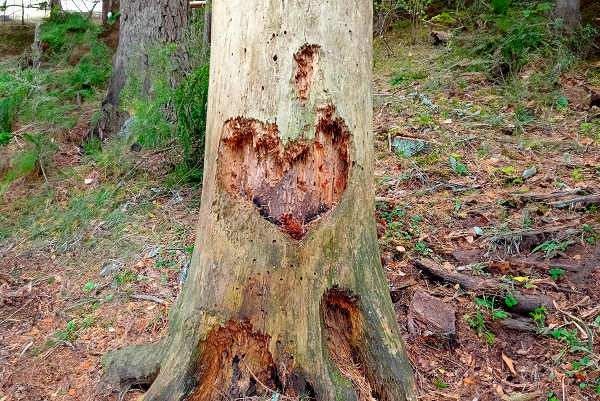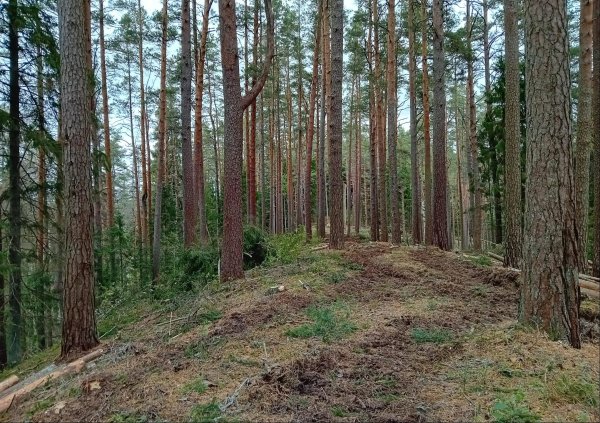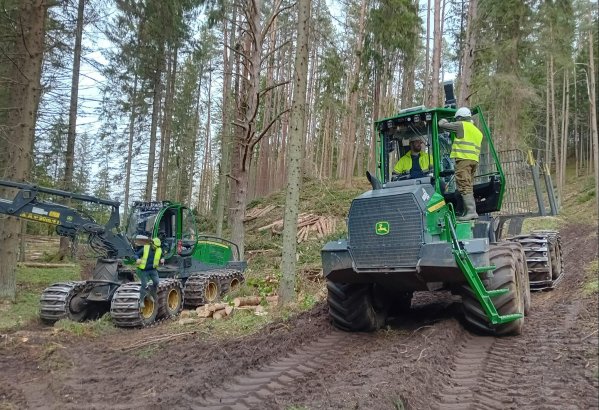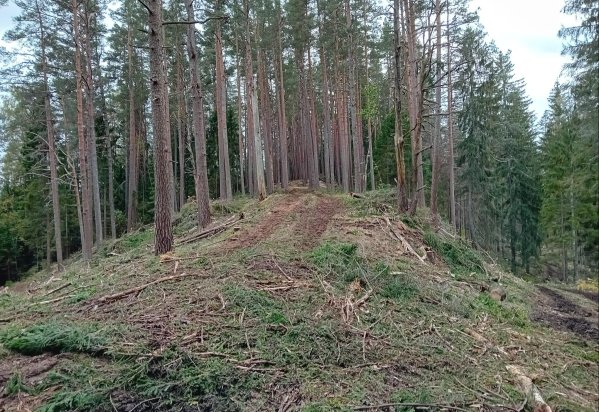The most Challenging and Methodologically Complex Works in Environmental Projects have Started: Restoration of Sand Ridge Forest on Steep Slopes in the Grebļukalns Nature Reserve
At the beginning of October, JSC “Latvia's State Forests” (LVM) started work to improve the condition of the rare sand ridge forest habitat in Latvia in the Natura 2000 area in the Grebļukalns nature reserve. It is one of the four pilot territories created within the project “LIFE-IP LatViaNature”, where LVM will carry out biotechnical measures to improve the condition of various forest habitats of EU importance and at the same time test nature-friendly forestry methods for the further management of these habitats, which is necessary for their long-term existence.
All forest pilot territories selected within the project are located in areas of forest habitats dependent on natural disturbances. In the absence of the necessary beneficial disturbances, nutrients accumulate in the valuable biotopes, they overgrow and the living conditions for the rare and specially protected species characteristic of them disappear. Therefore, during this project, natural disturbances such as fire, wind will be replaced by forestry methods and techniques that in a sense imitate natural processes, for example, thinning of trees and bushes, controlled burning, uncovering and loosening of the topsoil, etc.
“In the nature protection of the 20th century, the dominant approach was “do nothing and allow nothing”, which is a suitable solution for some ecosystems and some biologically valuable areas of the forest. Unfortunately, such an approach limited, and limits balanced management, destroys centuries-long traditions of coexistence of human and natural systems, and also contributes to the disappearance of ecosystems dependent on regular management, such as the rare sand ridge forest forests.
LVM has taken on the management of methodical solutions for the management of habitats that depend on management or regular disturbances, advancing the modern approach to nature protection – combining active management with undisturbed natural processes, thus implementing the protection of complex ecosystems. We are testing nature-friendly forest management models as part of an environmental project,” says Ieva Rove, LVM Board Member and habitat specialist.
In general, the works in the Grebļukalnė nature reserve will be carried out in a total area of almost 20 hectares and their purpose is to improve the condition of the rare sand ridge forest – over time, due to the lack of natural disturbances necessary for the habitat, nutrients have accumulated and the sparse pine forest on the steep slopes is thickly overgrown with hazels and fir trees. As the slopes become overgrown, the living space only for the existence of species characteristic of this forest habitat, which cannot grow in shady conditions, also decreases.
In the first stage of the work, the steep sand ridge forest slopes were freed of hazelnuts in the Grebļukalns nature reserve under particularly difficult conditions – a large slope. In turn, the number of spruce trees in the further part of the walking trail in the nature reserve has been reduced to achieve the dominance of pines tree characteristic of the habitat and to restore sunlit areas, which are important for the rare species of sun-loving species living here.
“In the first two weeks of October, we have already done a large part of the planned works. Currently, a harvester equipped with a MOIPU pincher head clears the slopes by pinching and uprooting bushes, mainly hazelnuts, in a part of the designated area, in the places that can be reached from the road. Medium-sized maintenance forestry equipment works on slopes that are not too steep, but where medium-sized forestry equipment could not move along the narrow back of the ridge, low-power forestry equipment Malwa works well. We are currently trying to take advantage of the favourable, dry weather and monitor the condition of the road on a daily basis to remove the secondary vegetation – timber – from the forest. This will mostly be done by timber haulers equipped with a tyre pressure control system – by changing the air pressure in the tyres, the equipment can move gently, if necessary, for example in wet conditions, without damaging the removal path,” says Dainis Babans, Head of Logging in the LVM Northern Latgale Region.
Restoration and uncovering of the condition of the sand ridge forest in the territory will continue until the end of 2025. Controlled burning of felling residues – piles of branches and excavated hazel stumps – will also be carried out to burn excess nutrients for the sand ridge forest and expose the grainy substrate – and this will create a suitable habitat for the habitat's characteristic, rare species of sunflowers, such as the sand sedge and the forest sedge. Also, the old viewing areas will be uncovered, two benches and a rotating photo frame will be installed, opening up the view and allowing everyone to enjoy the beautiful landscape of the lakes on each side of the beech – Šešku and Pintu lakes – which together form a very atypical landscape for Latvia.
The Grebļukalns nature reserve is methodologically and technically the most complex area of biotechnical activities planned by LVM so far; previously, such measures have not been taken in Latvia in Grebļukalns or other gravel and sand ridge forests on steep slopes.
All works in the territory are carried out in accordance with the instructions and under the supervision of certified nature experts and are coordinated with the responsible authorities.
During the “LIFE-IP LatViaNature” project (2021-2028), LVM will carry out restoration works of selected forest habitats of European Union importance and test nature-friendly forestry methods in a total area of more than 100 hectares in four pilot territories of disturbed forests: in the Lake Engures nature park, the protected landscape in the Ziemeļgauja area, in the Grebļukalns nature reserve, as well as in the inland dunes of Zvirgzde.







